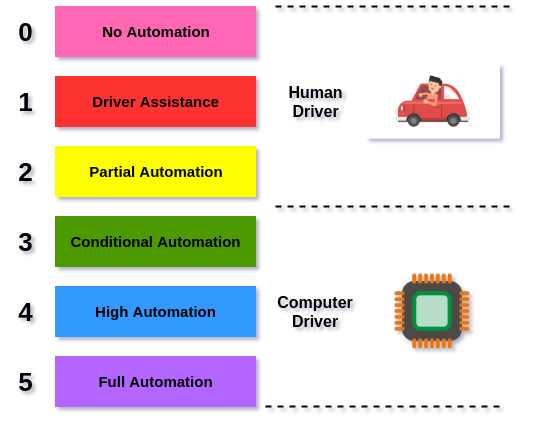Fun and challenging times have finally come! You are behind the wheel and about to hit the road. But wait a second, there are a couple of more moments to consider before turning the engine on. Adjust the drivers seat, all the mirrors, seat belt and ventilation controls for comfortable and safe driving position and for a good view. Before getting into a car, look behind and in front of it. There are blind spots once you are behind the wheel. Be aware of them and always check your blind spots before moving.

When the car is fully ready and adjusted to you and you're ready to get on the road, be extra careful with your position in the lane.
You can also use reference points to understand how your car is located when you approach the stop line or start to park.
A device driver usually communicates with the hardware by means of the communications subsystem or computer bus to which the hardware is connected. Device drivers are operating system-specific and hardware-dependent. A device driver acts as a translator between the hardware device and the programs or operating systems that use it. Energy, in physics, the capacity for doing work. It may exist in potential, kinetic, thermal, electrical, chemical, nuclear, or various other forms. There are, moreover, heat and work—i.e., energy in the process of transfer from one body to another. Learn more about energy in this article.
TS.6.1 Key Uncertainties in Observation of Changes in the Climate System
Drivers Basis Science Olympiad
Dynamics, branch of physical science and subdivision of mechanics that is concerned with the motion of material objects in relation to the physical factors that affect them: force, mass, momentum, energy. A brief treatment of dynamics follows. For full treatment, see mechanics. Dynamics can be. Morris Tanenbaum pointed out that this endeavor embraces many disciplines (basic science, engineering, production, distribution, marketing, and finance) and individual motivations. Many participants and observers of the contemporary technological scene propose that we are going through a period of discontinuous change as the breadth of.
Drivers Basis Science Jobs
- There is only medium to low confidence in the rate of change of tropospheric warming and its vertical structure. Estimates of tropospheric warming rates encompass surface temperature warming rate estimates. There is low confidence in the rate and vertical structure of the stratospheric cooling. {2.4.4}
- Confidence in global precipitation change over land is low prior to 1951 and medium afterwards because of data incompleteness. {2.5.1}
- Substantial ambiguity and therefore low confidence remains in the observations of global-scale cloud variability and trends. {2.5.7}
- There is low confidence in an observed global-scale trend in drought or dryness (lack of rainfall), due to lack of direct observations, methodological uncertainties and choice and geographical inconsistencies in the trends. {2.6.2}
- There is low confidence that any reported long-term (centennial) changes in tropical cyclone characteristics are robust, after accounting for past changes in observing capabilities. {2.6.3}
- Robust conclusions on long-term changes in large-scale atmospheric circulation are presently not possible because of large variability on interannual to decadal time scales and remaining differences between data sets. {2.7}
- Different global estimates of sub-surface ocean temperatures have variations at different times and for different periods, suggesting that sub-decadal variability in the temperature and upper heat content (0– 700 m) is still poorly characterized in the historical record. {3.2}
- Below ocean depths of 700 m the sampling in space and time is too sparse to produce annual global ocean temperature and heat content estimates prior to 2005. {3.2.4}
- Observational coverage of the ocean deeper than 2000 m is still limited and hampers more robust estimates of changes in global ocean heat content and carbon content. This also limits the quantification of the contribution of deep ocean warming to sea level rise. {3.2, 3.7, 3.8; Box 3.1}
- The number of continuous observational time series measuring the strength of climate relevant ocean circulation features (e.g., the meridional overturning circulation) is limited and the existing time series are still too short to assess decadal and longer trends. {3.6}.
- In Antarctica, available data are inadequate to assess the status of change of many characteristics of sea ice (e.g., thickness and volume). {4.2.3}
- On a global scale the mass loss from melting at calving fronts and iceberg calving are not yet comprehensively assessed. The largest uncertainty in estimated mass loss from glaciers comes from the Antarctic, and the observational record of ice-ocean interactions around both ice sheets remains poor. {4.3.3, 4.4}


Comments are closed.